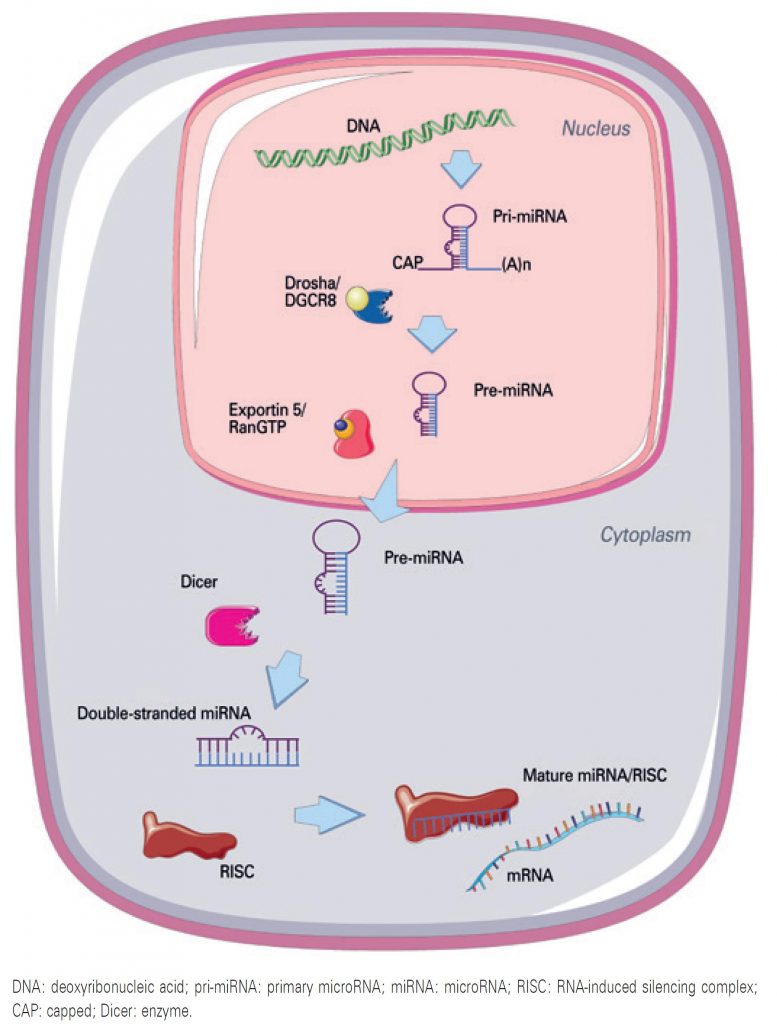einstein (São Paulo). 08/Jul/2021;19:eRB5996.
MicroRNAs: understanding their role in gene expression and cancer
DOI: 10.31744/einstein_journal/2021RB5996
ABSTRACT
MicroRNAs are small RNA molecules that regulate gene expression in cells. These small molecules comprise 17 to 25 nucleotides and are able to recognize target messenger RNAs by sequence complementarity and regulate their protein translation. Different microRNAs are expressed in all human cells. There is over 2,500 microRNAs described in humans that are involved in virtually all biological processes. Given their role as gene expression regulators, these molecules have been widely investigated and are thought to be associated with some specific physiological and pathological conditions, being proposed as biomarkers. It has recently been reported that microRNAs are secreted outside cells and are involved in intercellular communication. MicroRNAs in biological fluids are named circulating and have been detected in all body fluids, although the expression profile is specific for each type. The major advantages of using circulating microRNAs as biological markers are the high stability of those molecules and the wide availability of samples. Also, given the individual nature of microRNA expression changes, these molecules have a high potential for use in personalized medicine. In fact, microRNA expression profile determination may support disease recognition and diagnosis, and can be used to monitor therapeutic responses and establish patient prognosis, assisting in choice of treatment. This review provides a general overview of microRNAs and discusses the importance of those molecules in cancer, for deeper understanding of their role in this disease.
2,954

